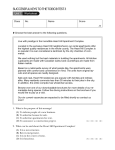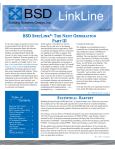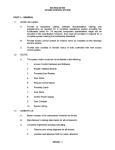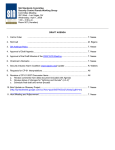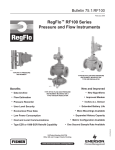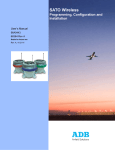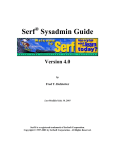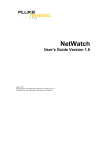Download Unit 3 Science and technology - National Geographic Learning
Transcript
Unit 3 Science and technology Hands-free! The screen is in the glasses and you can text using thought-power alone. F E AT U R E S 1 How much do you depend on technology in your day-to-day 34 Is technology the answer? 2 Work in pairs. Look at the photo and read the caption. Now Solving the problem of overpopulation 36 revealed world The smart technology of the future 38 One size doesn’t fit all Technology in the developing world 42 Augmented reality A video about future uses for 3G technology life and work? What happens if you lose your phone or your computer crashes? look at the words below. In which area(s) is the technological breakthrough in the photo? Which area will give rise to the main breakthrough of the next 50 years? artificial intelligence medicine communications space exploration energy use transportation 3 In pairs, discuss these predictions about the future. Do you think they are justified? Why? Which do you think will come true? 1 I expect that most of my generation will live to be around 100 years old. 2 I think in the future people will interact with intelligent machines even more than they do now. 3 I don’t think global warming is going to be the problem that everyone says it is. Unit 3 Science and technology 56309_01_P01_P009-044_ptg01.indd 33 33 08/05/14 9:46 AM 3a Is technology the answer? Kolkata’s streets crammed with vendors, pedestrians, and taxis speaking 4 1 Work in groups. Look at the photo. Which problems does the photo illustrate? congestion overpopulation poverty epidemic pollution starvation 2 Which of these problems could have a technological solution? Listening 3 9 Read the opinions (1–3). Then listen to the presentation about overpopulation. Match the opinion with the people (a–c). 1 Whenever the population is too big, a disaster reduces it. 2 Many people will die because there will not be enough food. 3 Science and technology will find a solution. a the speaker b Thomas Malthus c Paul Ehrlich 9 Listen again. Are the sentences true (T) or false (F)? 1 The speaker has some ideas for action which can immediately solve the problem of overpopulation. 2 Paul Ehrlich thought that we should control the number of babies being born. 3 There will be 7 billion people in the world by the middle of the century. 4 Nanotechnology has saved the world from mass starvation. 5 Earth does not have space for 9 billion people. 6 The growth in the “global middle class” will put big pressure on resources. 7 According to the speaker, people are basically lazy. 5 What is the meaning of each underlined prefix in these words from the speech? Match the prefix (1–6) to the meaning (a–f). 1 2 3 4 5 6 biofuels nanotechnology megacities microphone semi-retired ultracautious a b c d e f very small very big extremely of life or living things half × 10–9 wOrDBUILDInG prefixes There are many prefixes in English taken from Latin and Greek, each of which have a particular meaning: microphone, megacity 6 Do you share the speaker’s faith in science and technology? Why? 34 56309_01_P01_P009-044_ptg01.indd 34 08/05/14 9:47 AM Grammar future forms review fUtUre fOrms revIew will One moment, I’ll just adjust my microphone. It will be a bad thing for the planet if all those people start eating meat and driving big cars. The population will probably peak at around 9 billion by the middle of the century. going to I’m not going to speak for too long. Those of you who have come here looking for answers are going to be disappointed. about to Science is about to step in again with nanotechnology solutions. Present continuous I’m speaking to a government committee tomorrow. simple present France is the world’s favorite vacation destination. For more information and practice, see page 159. 7 Look at the grammar box. Match the verb forms (1–5) with their uses (a–i). Some verb forms have more than one use. 1 will 2 going to 3 about to 4 present continuous 5 simple present a b c d a scheduled event a future event in an if or when clause a prediction a confident prediction based on present information e a decision made at the time of speaking f an intention or previously made decision g a formal arrangement h a simple statement of fact i an event in the immediate future 8 Underline the correct future forms in this presentation. Sometimes there is more than one possibility. 9 Complete the news headlines using an appropriate future form. Check your answers with your teacher. (meet) in 1 World leaders Geneva tomorrow to discuss the issue of overpopulation. 2 In the next few weeks, the government (introduce) a fee for each child that couples have after their first two children. 3 Scientists say that space colonies (be) the only solution for overpopulation in the near future. 4 Doctors have said that in the future they (not / spend) so much effort keeping the old alive. 5 The government (launch) a new education program later today to encourage women to have fewer children. 6 People (have to) change their lifestyles if they (want) the world’s resources to support the growing population in the coming years. 10 Work in pairs. Underline all the time expressions in the sentences in Exercise 9. Then put them in order of the nearest to the most distant future. Compare your answers with another pair. 1 2 3 4 5 6 later today speaking 11 Work in groups. Decide which of the ideas in Exercise 9, or one of your own, are the best course of action for dealing with overpopulation. Then explain your plan and the reasons for it to the class. I think 1 we wait / we’ll wait a few moments until everyone 2 arrives / will arrive… OK, 3 I am beginning / I’ll begin now. Hello everyone and thank you for coming to hear my presentation about appropriate technology. I am 4 about to / going to speak for about 30 minutes and then I 5 will take / am taking your questions. If there 6 is / is going to be anything that you don’t understand, please ask me then, rather than during the presentation. My colleague, Liesel Babel, 7 talks / is talking this afternoon in the green seminar room, if people would like to learn more about appropriate technology. I think her session 8 starts / is starting at two o’clock. She 9 is speaking / will speak about her experiences in the field, working on various development projects in Africa. OK, 10 I am going to show / I’ll show you a short video now... Unit 3 Science and technology 56309_01_P01_P009-044_ptg01.indd 35 35 08/05/14 9:47 AM 3b Revealed world speaking reading 1 Work in pairs. What information 2 Work in pairs. Look at the picture and the labels. Which (news, travel advice, maps) do you get through printed media and what through digital media? information would you find useful or interesting if you were a visitor in Washington, DC? What other information might you want? 3 Read the article about augmented reality and complete the table. wOrDBUILDInG compound nouns (noun + noun) We can use two nouns together to mean one thing. information overload, computer graphics R e v e a l e d W o R l d By tim folger AR Other terms for augmented reality: 1 2 Examples of augmented reality already in use: 3 restaurant menus and prices 4 Devices we will use to see the augmented reality world: 5 6 Future applications for augmented reality technology: 7 8 The regular world presented to us by our five senses—you could call it reality 1.0—is not always the most user-friendly of places. We get lost in unfamiliar cities; we meet people whose language we don’t understand. So why not try the improved version: augmented reality (AR) or reality 2.0? AR technology superimposes computer-generated information on the real world, via a cell phone camera or special video glasses. Early forms of AR are already here. With the right downloads, smart phones can deliver information about nearby ATMs and restaurants and other points of interest. Not only can you see that there’s a Chinese restaurant on the next block, you can read the menu and prices, read reviews, and even find out how busy it is at the time. This is where the next revolution in computing will take place: not in ever-more-sophisticated virtual-reality games, but rather in the interface between the real world and the information brought to us via the Internet. Imagine bubbles floating before your eyes, filled with cool information about anything and everything that you see in front of you. Information overload? Maybe not. 3-D repair instructions Let’s jump ahead ten years. People trying to fix their cars won’t be looking at online repair manuals or books; they will be wearing a device that projects animated 3-D computer graphics onto the equipment under repair, labeling parts and giving step-by-step guidance. Such technology is already being used by the US Marines. Today’s window into the AR world can be a smart phone or special video glasses that look like wraparound sunglasses. But in ten years’ time, cell phones and video glasses will have been replaced by contact lenses etched with tiny LEDs which display text and images at a readable distance in front of the eye. A deaf person wearing these inconspicuous lenses will be able to see a real-time transcript of what people are saying as they speak. The question is: while we are all absorbed in our new AR worlds, how will we be interacting with each other? Hercules rises: 6:03 a.m. sets: 9:25 p.m. a large constellation representing the mythological hero Hercules corona borealis US Capitol complex Sanphan restaurant 41 reviews Thai $$ 0.7 miles …construction of the capitol began in 1793. When built, it was… Atm (automatic teller machine) (n) /ˈeɪˌtiˈem/ a place for withdrawing money float (v) /floʊt/ to hang in the air or on water inconspicuous (adj) /ˌɪnkənˈspɪkjuəs/ not easily noticed N 36 56309_01_P01_P009-044_ptg01.indd 36 08/05/14 9:47 AM 4 As a class, discuss the questions. 1 Which of the AR applications described in the article do you think will be really useful? 2 Can you think of any other applications? 3 What do you think is the answer to the author’s final question? Grammar future continuous and future perfect 5 Look at the sentences (a–e) and the verbs in bold. Which sentences describe: 1 an action in progress some time in the future? 2 an action completed before a certain point of time in the future? a A few years from now, the quantity of information available will have increased enormously. b Ten years from now, people trying to fix their cars won’t be looking at repair manuals. c They will be wearing a device that projects animated 3-D computer graphics onto the equipment under repair. d In ten years’ time this device will have been replaced by contact lenses etched with LEDs. e But in our new AR worlds, how will we be interacting with each other? fUtUre COntInUOUs and fUtUre PerfeCt future continuous We will be using... We won’t (will not) be using... Will we be using...? future perfect We will have used... We won’t (will not) have used... Will we have used...? For more information and practice, see page 160. 6 Look at the grammar box. Complete the predictions (1–10) by putting the verb in the future continuous or future perfect. Ten years from now: 1 very few people in the developed world (use) credit cards because cell phone payment (replace) them. 2 people (sit) in front of traditional computers much less than they do now. 3 data security (become) a huge issue because mobile devices will store so much personal information. 4 advertisers (put) their ads on mobile devices instead of in traditional media like TV, magazines, etc. 5 we (get) used to ads which target us directly with personalized messages. 6 body sensors connected to our mobile devices (provide) us with real-time information about our health. 7 the problem of short battery life (disappear) because phones and mobile devices (use) more sophisticated power sources, like kinetic energy. 8 cell phones (become) very sophisticated, so that in addition to using them as a calendar, address book, and music player, you (also / use) them as your secretary, accountant, and lawyer. 9 everyone (use) universal translators in their cell phones, which will make language learning less necessary. 10 it is unlikely that we (find) a way to use technology to know exactly where people are, because legally it is so difficult. speaking 7 Work in groups. Discuss the predictions for mobile technology in Exercise 6 and decide which ones you think will come true and which not. Then make two more predictions of your own. Peregrine Expresso 195 feet Free Wi-Fi Unit 3 science and technology 56309_01_P01_P009-044_ptg01.indd 37 37 08/05/14 9:47 AM 3c One size doesn’t fit all reading vocabulary useful devices 1 What does the term “one size fits all” mean about 8 Complete the definitions with these adjectives. a product? What products could it be applied to? 2 Read the article once quickly. Are the facts about appropriate technology true (T) or false (F)? 1 It’s simple technology. 2 It’s used in developing countries. 3 It improves people’s lives. 3 Find a phrase in the article that defines what “appropriate technology” means these days. What does the author say about this? 4 Work in pairs. Discuss what each of these devices is and what it’s an example of according to the author. a central heating system a device for shelling corn a sewing machine a solar-powered lamp a water purifier an efficient stove 5 Look at these phrases in bold from the article. Then choose the correct definition of the sentence. 1 in a way that empowered them (para 1) gave them more energy / control 2 intermediate technology solutions (para 2) temporary / not too complicated solutions 3 has its place in the developed world (para 3) can also be useful / be found in 4 a way to harness the energy (para 4) a way to convert / make use of the energy 5 they valued the time (para 5) they appreciated / calculated the time 6 gas-guzzling cars (para 6) cars that consume a lot of gas / little gas Critical thinking balancing arguments 6 What are the potential risks and benefits associated with appropriate technology? Find the arguments in the article and make notes. 7 Work in pairs. Compare your answers. Is the author in favor of appropriate technology or not? appropriate renewable easy useful efficient old long-term 1 It’s a very neat solution: both clever and appropriate . 2 It’s a time-consuming process. We need to find a solution that’s more . 3 We don’t just want a quick fix; we want a solution. 4 It’s a handy gadget, much more than an average penknife. 5 It’s not cutting-edge technology, but often the ways are the best. 6 It’s essentially a labor-saving device; it makes cutting up wood very . 7 It’s an environmentally-friendly product because it’s made from materials. 9 Work in pairs. Tell your partner about your favorite device or gadget using one of the expressions in Exercise 8. speaking 10 Work in pairs. Complete the sentences (1–8) using these phrases. What is each product? 6 hours 6 people only $3.10 solar power Product 1 1 It can hold up to… 2 It’s made of… 3 It can be… 4 It weighs… about 4 pounds light and a little heat put up in a few minutes strong nylon Product 2 5 It runs on… 6 It lasts up to… 7 It costs… 8 It provides… 11 Work in groups. You are going to take part in a competition: “Best appropriate technology product of the year.” Your group will have to present one of the products shown below. Look at the instructions on page 153. 38 56309_01_P01_P009-044_ptg01.indd 38 08/05/14 9:47 AM ne size doesn’t fit all Even if the term “appropriate technology” is a relatively new one, the concept certainly isn’t. In the 1930s, Mahatma Gandhi claimed that the advanced technology used by Western industrialized nations did not represent the right route to progress for his homeland, India. His favorite machines were the sewing machine, a device invented “out of love,” he said, and the bicycle, which he rode all his life. He wanted the poor villagers of India to use technology that empowered them and helped them to become self-reliant. This was also the philosophy promoted by E. F. Schumacher in his famous 1970s book Small Is Beautiful, which called for “intermediate technology” solutions. Do not start with technology and see what it can do for people, he argued. Instead, “find out what people are doing and then help them to do it better.” According to Schumacher, it did not matter whether the technological answers to people’s needs were simple or sophisticated. What was important was that solutions were long-term, practical, and, above all, firmly in the hands of the users. More recently, the term “appropriate technology” has come to mean not just technology which is suited to the needs and capabilities of the user, but technology that takes particular account of environmental, ethical, and cultural considerations. That is clearly a much more difficult thing to achieve. Often it is found in rural communities in developing or less industrialized countries. For example, solarpowered lamps that bring light to areas with no electricity and water purifiers that work simply by the action of sucking through a straw. But the principle of appropriate technology does not only apply to developing countries. It also has its place in the developed world. For example, a Swedish state-owned company has found a way to harness the energy produced by the 250,000 bodies rushing through Stockholm’s central train station each day. The body heat is absorbed by the building’s ventilation system, then used to warm up water that is pumped through pipes over to the new office building nearby. It’s old technology, a system of pipes, water, and pumps, but used in a new way. It is expected to bring down central heating costs in the building by up to 20 percent. Wherever it is deployed, there is no guarantee, however, that appropriate technology will in fact be appropriate. After some visiting engineers observed how labor-intensive and slow it was for the women of a Guatemalan village to shell corn by hand, they designed a simple mechanical device to do the job more quickly. The new device certainly saved time, but after a few weeks the women returned to the old manual method. Why? Because they valued the time that hand-shelling gave them to chat and exchange news. In another case, in Malawi, a local entrepreneur was encouraged to manufacture super-efficient woodburning stoves to sell to local villagers. Burning wood in an open fire, which is traditional in the developing world, is responsible for 10–20 percent of all global CO2 emissions, so this seemed to be an excellent scheme. However, the entrepreneur was so successful that he bought himself a whole fleet of gas-guzzling cars. “We haven’t worked out the CO2 implications of that yet,” said a spokesman for the organization that promoted the scheme. Unit 3 Science and technology 56309_01_P01_P009-044_ptg01.indd 39 39 08/05/14 9:47 AM 3d Computer problems real life asking for and offering technical help 5 Pronunciation stress in two-syllable verbs a 1 Work in pairs. Ask and answer the questions. 1 How are your computer skills? 2 Can you use the following applications proficiently? ● ● ● ● ● a search engine (like Google) spreadsheets (like Microsoft Excel) a presentation slide show (like PowerPoint) photo editing (like Photoshop) word processing (like Microsoft Word) 2 Where do you turn for computer help? Do people turn to you? 3 10 Listen to a conversation about a computer problem. What is Ben trying to do? What two possible solutions does Sophie propose? 11 Work in pairs. Listen for these phrases and note how the stress in the two-syllable verbs falls on the second syllable. Then practice saying them. What do you suggest? What does that involve? It won’t allow me to copy it. First select the picture,… What are you trying to achieve? What solution do you propose? Did you attach the document? b Think of two more two-syllable verbs. Put them into a phrase or sentence. Then tell another pair your words. 6 Choose one of the tasks below or think of a technical problem that you have had. Then roleplay a conversation similar to the one in Exercise 4. Use the box to help you. Begin like this: Can you help me? I’m trying to edit this photo. 4 I’ll try. What do you want to do exactly? 10 Listen again and complete sentences 1–10. AsKInG fOr AnD OfferInG teCHnICAL HeLP ● Person in need of help Helper Can you give me a hand? I’m having trouble 1 . OK. What do you want to do exactly? I’m trying to 2 You could just 3 The trouble is 4 . . ● . Let me take a look. ● What should I do then? There are two possibilities. You can either 5 or… What does that involve? I’ll show you. Just 6 That should do the trick. I see, but 7 do you suggest? OK I’ll give that a try. . What else . Have you tried 8 If you do a search, you might 9 . Feel free to 10 ? . ● ● editing a photo of a person (to leave only the head and shoulders) sorting a list of names (members of a club you are the secretary of) alphabetically from A–Z adding your comments to someone else’s document (a report written by a colleague) making your presentation slides more interesting (they are just plain text for now) searching the Internet to get the right information (such as up-to-date news about smart technology) 40 56309_01_P01_P009-044_ptg01.indd 40 08/05/14 9:47 AM 3e A technical problem writing short email requests b Complete these other expressions with out of using the words given. 1 Match the emails (1–4) with the correct reply (A–D) blue below. Answer the questions. 1 What is the relationship between the correspondents in each case? 2 What help is offered in response to each request? a How polite you are depends on your relationship to your correspondent and on what you are asking for. Underline the phrases used to make polite requests in emails 1–4 and the polite forms used to apologize in emails A–D. b Now answer the questions. 3 word focus out of I bought a printer at your store only five weeks ago and the pages are coming out very light. I am very disappointed and would like to return it and get a new one. Can you please tell me how? 3 Thanks a lot for the advice with the car, Jim. I changed the air filter and it’s running much better now. Just out of curiosity, do you happen to know anything else I could do to improve its performance? Let me know! 4 Would you mind stopping by and having a look at my bike sometime? It’s making a strange noise. I’d be really grateful. Please don’t go out of your way, though. Anytime in the next week is fine. time You buy two cartridges for your printer online, but when they arrive you notice that the expiration date on them has already passed. Write and ask for replacements to be sent. 5 Exchange emails with your partner. Use these questions to check your partner’s email. Then write a reply. ● ● 2 order email requesting help. the emails and discuss what you think they mean. Then compare your answers with another pair. Three months ago I bought one of your X3000 digital cameras from a store that has since gone out of business. The camera is fine but I cannot find the user manual. Could you please tell me where I can find one? I’ve looked on the Internet, but without success. Thank you. luck 4 Look at the following situation and write a short a Work in pairs. Circle the expressions with out of in 1 hands 1 I’ve done all I can to get them to change their decision. It’s out of my now. 2 She is still in shock after losing her job; the news came out of the . 3 I’m afraid that printer is out of . You’ll have to use the one in the next office. 4 This information is out of . It has last year’s numbers on it, not this year’s. 5 I’m sorry we are out of . Let’s continue the discussion tomorrow. 6 You’re out of , I’m afraid. We sold the last one an hour ago. 2 writing skill being polite 1 What word is used for more formal requests? 2 What is the difference between can you and could you? 3 Is would you mind more or less direct than could you please? 4 What is a more formal way of saying I’m sorry? date Are the situation and the action demanded clear? Is the email in the right tone (formal or informal) and polite in its request? a Sorry, I’d love to help, but I’m going on vacation tomorrow for three weeks. Why not take it to Cycle Surgery on Main Street? They know their stuff. B I am sorry, but an exchange is out of the question. It is too long after the original purchase date. However, from what you say, it may be that it is just out of ink. Please check the ink cartridges. If that does not work, contact our technical team for further advice. C I’m afraid I’m out of my depth there. Try looking at the discussion boards on the Internet for your particular model. I’m sure someone’ll know. D I regret to say that we only supply user manuals with the equipment at the time of purchase. However, you can download one using the link below. Unit 3 Science and technology 56309_01_P01_P009-044_ptg01.indd 41 41 08/05/14 9:47 AM 3f Augmented reality video It’s a relationship all built on numbers and hard work. 42 56309_01_P01_P009-044_ptg01.indd 42 08/05/14 9:47 AM Before you watch After you watch 1 Work in groups. Look at the picture and discuss 6 roleplay an interview with Professor the questions. 1 2 3 4 What do you know about augmented reality? Where do you think the man in the picture is? What is he wearing? Why? What do you think the caption means? 2 How do you think a headset like this could be used? Work in pairs and write down three things you think you could use it for. while you watch feiner Work in pairs. Use the information in the list. Student A: Imagine you are a reporter for the Columbia University newspaper. Prepare a list of questions to ask Professor Feiner. Student B: Imagine you are Professor Feiner. You are going to be interviewed for the Columbia University newspaper. Think about what you are going to say to the reporter. ● 3 Watch the video and check your ideas from Exercise 2. Which three groups of people does the video say could benefit from this technology? 4 Watch the video again and correct these sentences. 1 Professor Feiner is working with a group of biology students. 2 The team wants to develop a virtual world that is separate from the physical world. 3 The virtual world can provide extra information about what you feel. 4 A global positioning system allows the team to use the equipment in the laboratory. ● ● ● ● ● Act out the interview. Then change roles and act out the interview again. 7 Work in pairs and discuss these questions. 1 Have you ever seen or used any of the following devices? ● ● ● 5 The system wouldn’t be very useful for people to find their way around places they don’t know well. 6 Professor Feiner developed the technology because he has a bad sense of smell. 5 Watch the video again and answer the questions. 1 What is the Columbia University program trying to do? 2 How could these people use this technology? a firefighters b pilots c tourists when you started the project how many students work with you what the technology could be used for what you have to do in the laboratory why you decided to do research on augmented reality how you think the technology could be advanced in the future ● ● simulators for learning to drive night vision glasses for seeing in the dark billboard ads that speak to pedestrians Wii™ games T-shirts with moving images 2 How useful do you think they are? 3 What are the advantages and disadvantages of augmented reality technology? asylum (n) /əˈsaɪləm/ a hospital for mentally ill patients blueprints (n) /ˈbluˌprɪnts/ building plans cockpit (n) /ˈkɑkˌpɪt/ place in an airplane where the pilot sits handheld (adj) /ˈhændˌheld/ carried in the hand obscure (v) /əbˈskjʊr/ hide overlay (v) /ˌoʊvərˈleɪ/ show on top of prototype (n) /ˈproʊtəˌtaɪp/ an experimental working model superimpose (v) /ˌsupərɪmˈpoʊz/ put one image on top of another surroundings (n) /səˈraʊndɪŋz/ the area around something or someone 3 What do you think a “situated documentary” is? 4 What would visitors to the campus “see” in addition to the library? Unit 3 Science and technology 56309_01_P01_P009-044_ptg01.indd 43 43 08/05/14 9:47 AM UnIt 3 REVIEW Grammar 1 Work in pairs. Name at least three of the global problems mentioned in the unit. 2 Look at the photo. What global problems could these windmills be the answer to? 3 Read the text and answer the questions. 1 What is the problem the author mentions? 2 What should be our target if we want to solve the problem? 3 How can we achieve this target? 4 Why are windmills not a solution? 4 Choose the correct option. Reducing CO2 emissions is perhaps the world’s biggest problem. If we 1 won’t reduce / don’t reduce our emissions to almost zero, global temperatures 2 will continue / are continuing to rise. At the current rate, temperatures 3 will be increasing / will have increased by three or four degrees by 2050. CO2 emissions 4 will come / are about to come down if one of three things 5 happens / will happen. First, if we change our lifestyles and stop using electricity; second, if the gadgets we use don’t need energy; or third, if we find a way to generate electricity without producing CO2. Well, people 6 are not stopping / are not going to stop using electricity. If anything, in 30 years’ time, they 7 will be using / will have used more. Perhaps in the future, gadgets 8 will consume / will be consuming less energy, but certainly not zero energy. That leaves only one possibility. Scientists 9 are having / will have to find a way to generate CO2-free electricity. Wind and solar power are only intermittent energy sources. What miracle invention 10 will be generating / will have generated our electricity in 2050? No one knows, but the miracle will need to happen soon. vocabulary 5 Read the definitions. Complete the words. The first letter has been given for you. 1 2 3 4 5 6 too much information = information o a big advance in science = a technological b technology suited to its context = a technology a clever answer to a problem = a n solution a useful device = a h gadget a fast, easy solution to a problem = a quick f 6 Work in small groups and answer these questions. 1 Which of these problems do you think technology will solve? Why? epidemics overpopulation pollution starvation 2 In what area will new technology most change people’s lives in the next 50 years? I CAn talk about global problems and solutions talk about new technology: devices and gadgets real life 7 Match each statement or question (1–5) with the correct response (a–e). 1 2 3 4 5 Can you give me a hand? What do you want to do exactly? If you restart the computer, that should do the trick. What else do you suggest? The trouble is the computer won’t allow me to copy it. a b c d e Have you tried looking for another type of map? Thanks. I’ll give that a try. Sure. I’ll be with you in a second. Let me have a look. I’m trying to paste this map into a document. 8 Work in pairs. Act out a conversation asking for help with a computer problem. I CAn ask for and give technical help talk about computing tasks speaking 9 Work in pairs. Tell each other your predictions for your life (education, job, where you will live, travel, relationships, etc.). Use the future continuous and future perfect to talk about: ● I CAn talk about future events, intentions, and arrangements using a variety of future forms make predictions using the future continuous and future perfect ● ● a year from now three years from now ten years from now 10 Change partners and tell each other your original partner’s predictions. 44 56309_01_P01_P009-044_ptg01.indd 44 08/05/14 9:47 AM















